For the love of cod: a historical look behind Portugal’s obsession with bacalhau

If you have ever read about Portuguese food, you might have come across the statement that salted cod, known in Portuguese as bacalhau, is Portugal’s national dish. We could argue this, not only because we think that there are other dishes that better embody Portugal’s edible history, but also because cod is not a dish, but rather an ingredient. That being said, salted cod is indisputably a national staple and has been so for the past 500 years.
Portuguese fish preserving through the ages
Even though the Portuguese word bacalhau simply translates as cod, here in Portugal, when we talk about bacalhau, we are automatically referring to cured salt cod. Only in the last couple of decades have Portuguese cooks started playing around with fresh cod, which still doesn’t amount to even 10% of the total cod consumption in our country.
As far back as 2000 years ago, during the peak of the Roman Empire which extended across Europe and into the Iberian Peninsula, Portugal was already into drying fish. In fact, during those times, Portugal was the biggest supplier of preserved fish for the entire empire. Peniche, the Sado and the Tejo Valley, all nearby Lisbon, as well as the southern areas of the Alentejo and the Algarve, were home to fish processing plants, with very notable economic potential. Even when the trade routes of the Roman Empire started losing importance, the Portuguese fishing and fish preservation industries lived on well throughout the centuries.
All sorts of fish caught in the Portuguese coastline used to be cured with abundant salt and dried under the sun, to guarantee the extended shelf life of the ingredient, not only locally, but even more so to be transported to different parts of the country and the continent. Salting fish emerged as a technique thanks to the sheer necessity of preserving food when no reliable cooling methods existed.
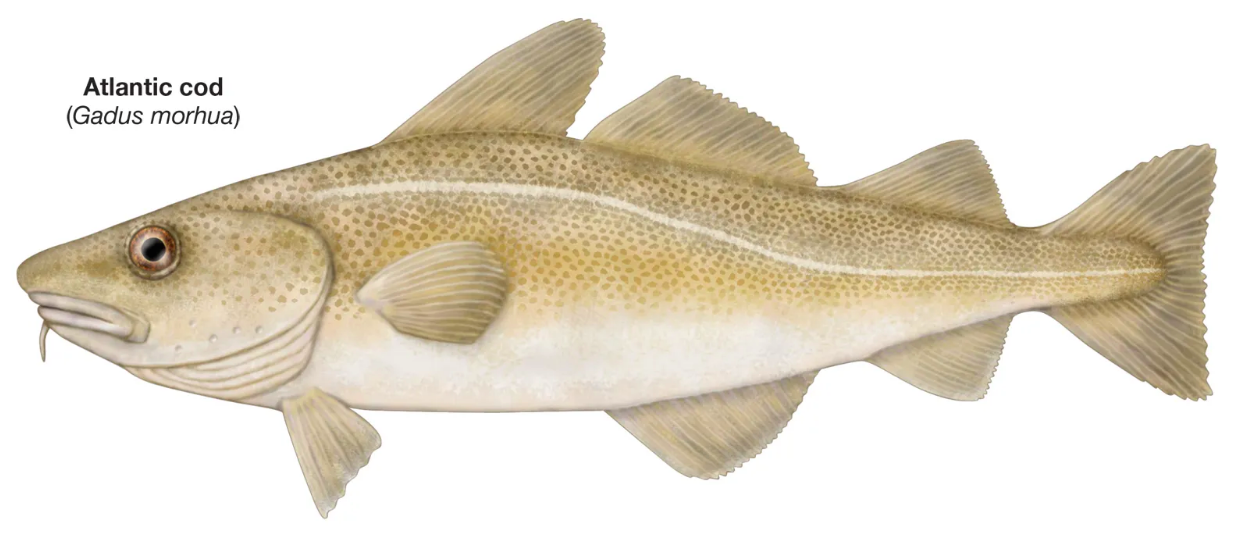
Cod before the Portuguese
Cod has never existed in Portuguese waters. This big species, gadus morhua, which can weigh up to 40kg, thrives in deep icy waters, such as those around the North Atlantic. There is no exact historical record of when cod started being consumed by humans, but we do know for sure that, around the 9th century, Vikings were already relying on this chunky fish during their sea voyages. Even though cod could be fished from aboard their ships during the actual trips, Vikings were already keen on preserving it beforehand, for the sake of food guarantee for extended periods of time. Unlike the Portuguese, the Viking method of fish preservation did not involve salt. The fish was simply cut open, deboned, and left to dry under the sun, either on wooden racks or over rocks by the shore. The removal of water content from the flesh would guarantee safety during its storage. Nowadays, you will still find stockfish in nordic countries such as Iceland and Norway.
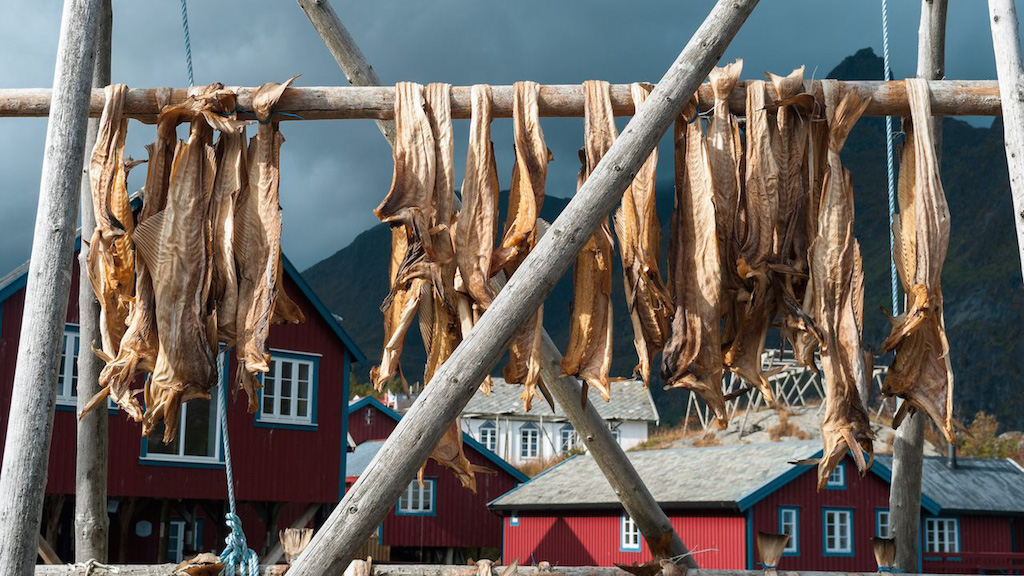
Around the same time, the Basques, from today’s Spain, were strong at whaling all across the Atlantic. Having come in contact with the Vikings, the Basques learned about stockfish, a technique of drying cod which was naturally passed onto other European seafaring people, such as the Portuguese. But what we know today as bacalhau, didn’t come up just yet.
The Portuguese “discovery” of cod
Salted cod only came into existence when in 1497 the Portuguese reached Newfoundland, in Canada. It was the 15th century when the Portuguese came across what was the most abundant resource of cod ever seen. While making stockfish would be the most obvious choice to make the most of this food resource, the truth was that the climate across the Atlantic didn’t make this preservation method feasible. As such, the Portuguese did what they had been doing for centuries with other fish: salting it! They would catch the cod, gut it, cut it into pieces just like it was being done until then for air drying, but instead of hanging it open air, they would put it inside wooden barrels with lots of coarse salt.
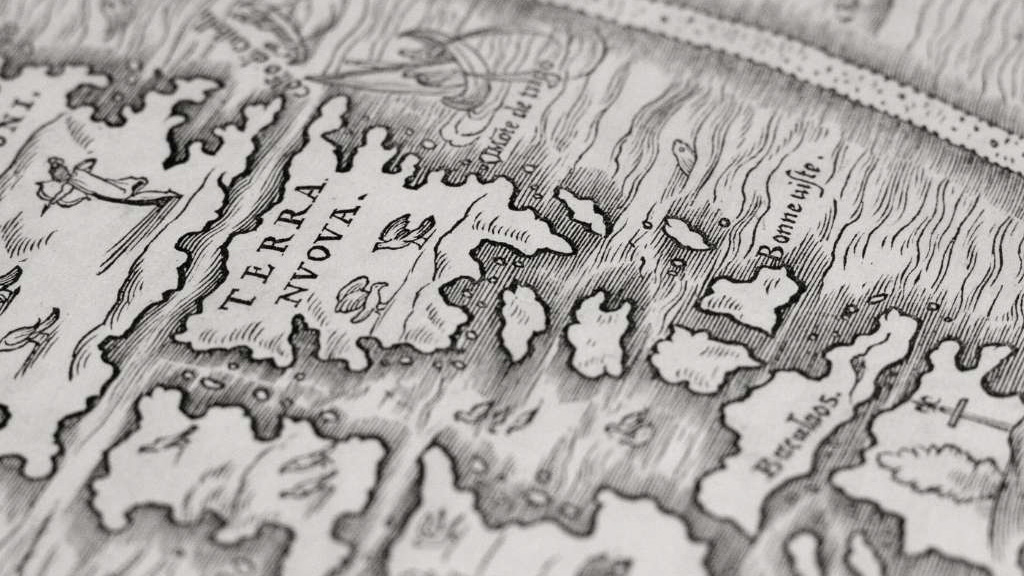
Salted cod represented an incredibly nutritious and long-lasting food source aboard the ships during the Portuguese sea expeditions to the Americas and Asia. Of course the same could have been done with the smaller fish caught in Portugal’s coast, but cod was more attractive, not only because of its size, but also because of its white flaky flesh which people had come to appreciate over the centuries.
This is when the era of stockfish came to an end in Portugal and the Iberian Peninsula as a whole, and the reign of bacalhau began. Curiously, the name bacalhau evolved from the Dutch kabeljauw, which has already been borrowed from the French cabaillaud. Independently of the name, the seafaring countries of Europe started preferring the salted cod from this point in history onwards.
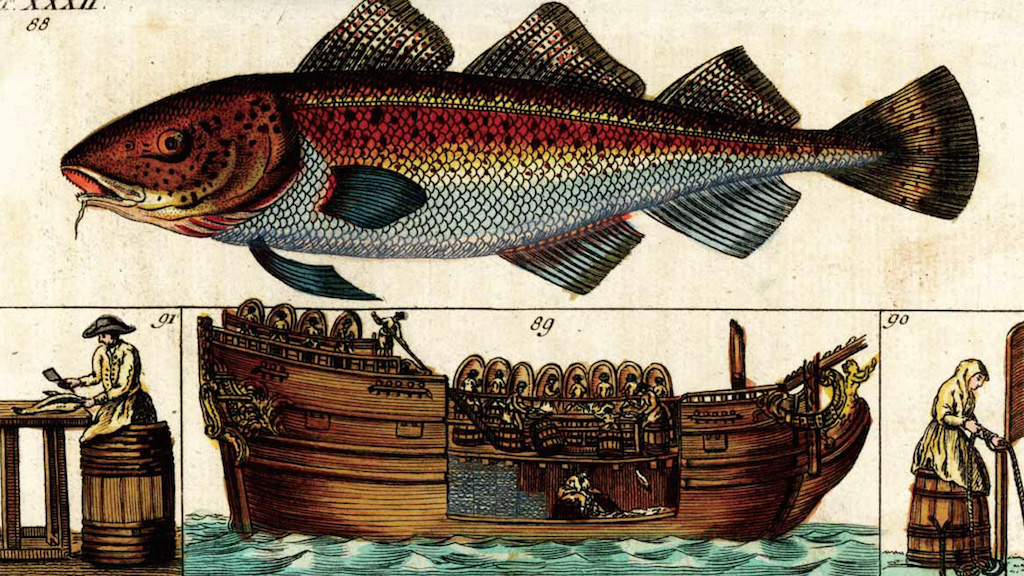
In the 16th century, the Atlantic trade of cod was booming. Fishing in the North Atlantic was dominated by the English, who struck a deal with Portugal exchanging fish for the salt that they also used to preserve the cod they were to supply to the rest of Europe and the Caribbean. The better grade pieces were brought into Europe, while the lower quality cod was sent to the Caribbean to feed slaves. Even in the Portuguese context, considering the large quantities of cod that were being traded, the prices were low. Being nutritious, easy to transport, long lasting and cheap, salted cod started being regarded as “the meat of the poor”. There are no precise records that document when the Portuguese started referring to salted cod as o fiel amigo, the faithful friend, but we can understand that during these days it was already playing an important role. Regardless of the time of the year, no matter where in the country you’d be, you could count on eating this fleshy fish, highly appreciated for its flavor and texture.
During this time, Portugal also had its own fleet of ships, but after our nation started heavily investing in world explorations, fewer funds were allocated to fishing boats. After having already developed a taste of salted cod, Portugal kept consuming this fish, even if it meant that it would have to mostly import it. And so Portugal started receiving fish that would afterwards be preserved locally through salting methods. Over time, this meant that the prices started to increase. Speculation over salted cod rates sparked the interest of the noble, who until this time were not particularly interested in eating such a common food of the people.

During the 17th century, similarly to nowadays, salted cod was a food that was being eaten a little all over the country, by mostly everyone, humble or rich. But soon enough, with the English monopoly of cod supplying to Portugal, cod became a food for the higher classes who could still afford it.
It was 1835 when the Companhia de Pescarias Lisbonense (Lisbon’s fishing company) was founded and that the Portuguese started fishing their own cod once again.
The “faithful friend” and the Portuguese dictatorship
The glory years of the Portuguese cod fishing industry happened between 1950 and 1960. During this time, Portugal was living under Salazar’s dictatorship. In 1937, the cod fishermen, known in Portuguese as bacalhoeiros, did a historic strike, which led to more well defined rules for the industry, as well as measures of protection for those working in it. Being a bacalhoeiro meant risking your life every time you went out to sea. Even though the expeditions happened aboard big ships, the actual fishing took place in small dory boats, where workers were to individually capture several fishes using the line and bait method, before returning to the main boat where the salting process was to begin taking place.
With the government’s incentive and a fleet of 13 cod fishing ships operating around Newfoundland and Norway, Portugal became a world leader in salted cod production.
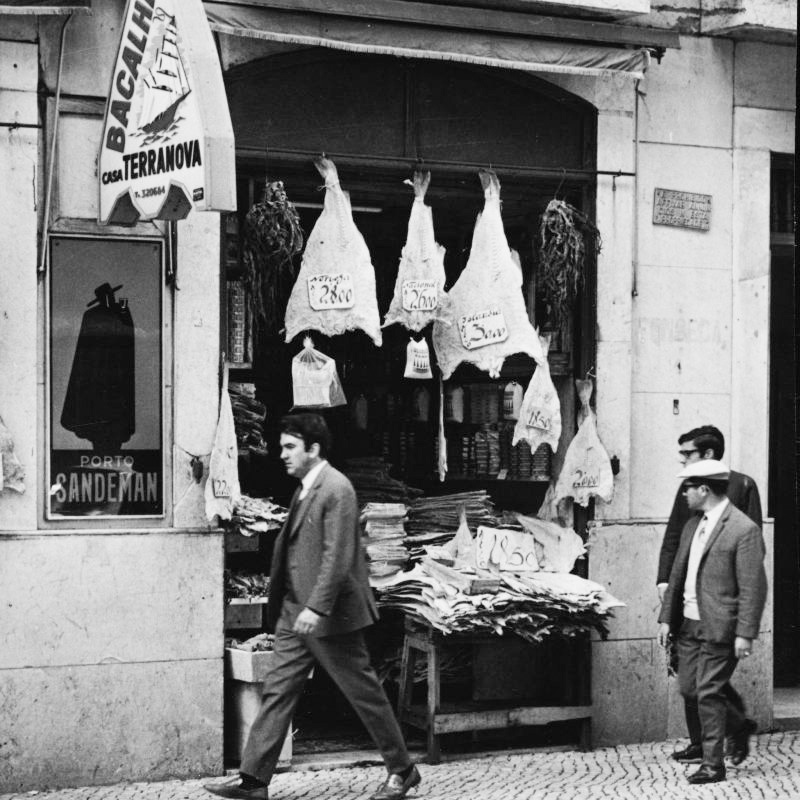
During this time, cod was a solid staple in the Portuguese table at home, but also in the taverns and restaurants that started becoming more commonplace from the 19th century onwards, particularly in the capital. Salazar’s measures ensured the price of cod remained stable, and thus no family had to part ways with the faithful friend.
After the industrial revolution and later generalization of the use of cold for preserving food, the truth is that salting was no longer a necessary method to preserve fish. But by this time, not only had the Portuguese developed quite a liking for bacalhau’s flavor and texture, it had also become a part of the national identity. Salazar’s political propaganda, which spread the narrative of salted cod being an integral part of Portuguese heritage, highly contributed to this. But so did the Christian religion who had the majority of the people not consuming meat on Fridays or on the Lent period leading to Easter. Fasting according to Catholic tradition meant avoiding meat but fish was allowed, and if it was the much beloved bacalhau, then depriving oneself felt tastier.
Today, cod is god!
Nowadays, the cod that is consumed in Portugal is imported, and 70% of it comes from Norway. Eventually, with the dissolution of the dictatorship in 1974, Portugal started importing its fish once again, but this didn’t mean that the consumption rates decreased. By now, bacalhau was such a fundamental part of the Portuguese diet and some of the most celebrated dishes of Portuguese food were salt cod based, that there was no turning back.
As of today, Portugal is the biggest consumer of salted cod worldwide, amounting to 20% of the global consumption, and averaging 35kg per person per year. Cod is particularly important during family gatherings and religious celebrations such as Christmas.
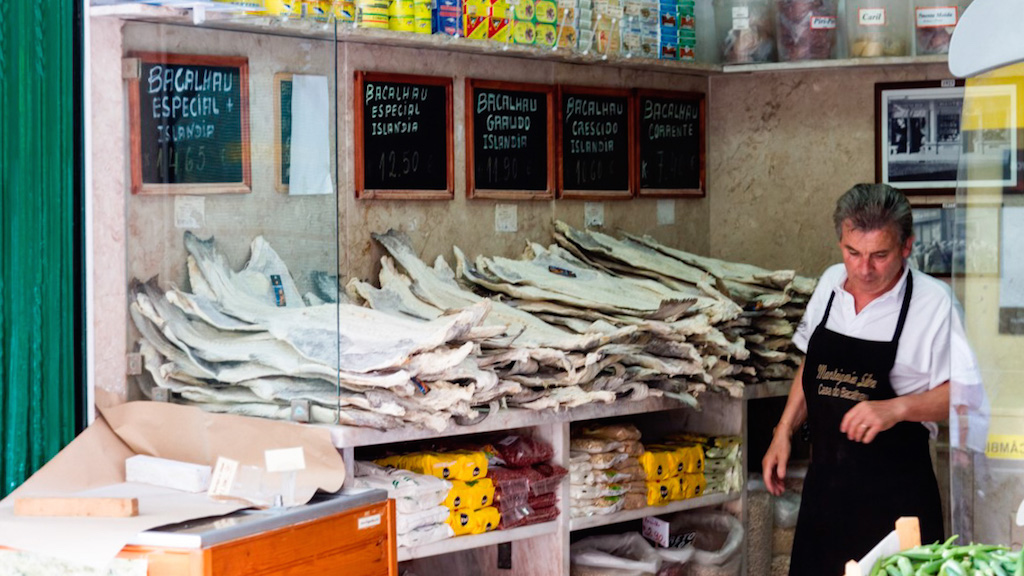
When you travel to Lisbon, you can visit a bacalhoaria or a traditional grocery store, where you can appreciate the pungent smell of salted cod, as well as learn about the differences of the cuts and how to select a good piece of bacalhau. No matter what, salted cod needs to be desalinated in several rounds of abundant water before it is cooked. As such, if you want to follow the traditional method, you need to plan at least 24 hours in advance, in case you’d like to play Portuguese chef for a day and cook a typical Portuguese bacalhau recipe in your own kitchen. Even though today, you can also find salt cod that has already been soaked in the frozen aisle of the supermarket.
Even though Portugal keeps consuming a lot of other fish, such as sardines and mackerel caught in our own coast, salted cod is still worth it as a source of nutrition and versatility. But, above all, the Portuguese simply adore the flavor of the fish after it has been cured with salt, and the texture that has the flesh come apart in flakes that are easy on the pot and on the palate.
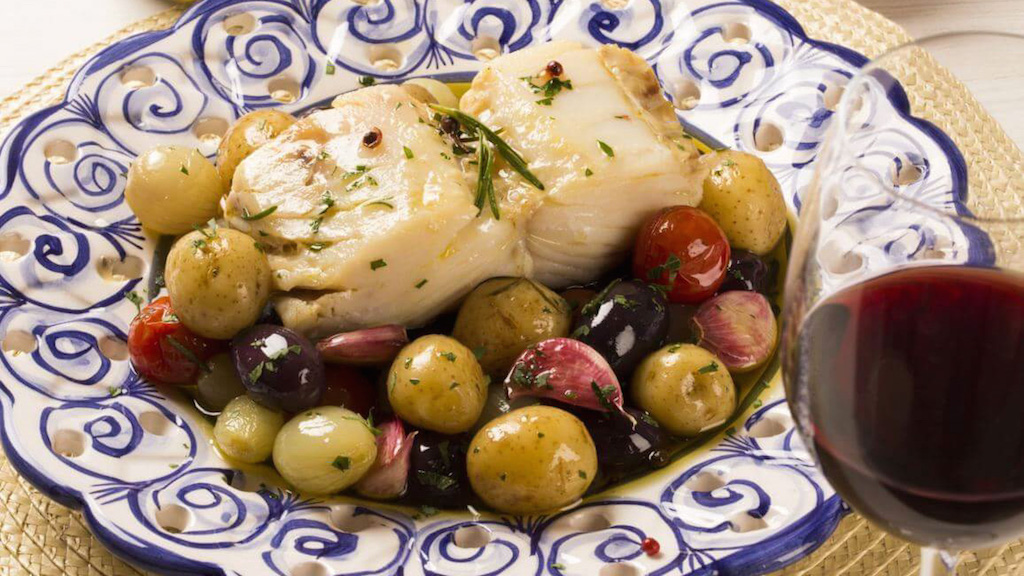
Traveling around Portugal, you’ll come across plenty of regional recipes for Portugal’s favorite fish. From the thick slices of cod loins that star in bacalhau à lagareiro (roasted salt cod with garlic olive oil), to the sames or swim bladders used in stews, and caras or face chicks of cod steamed and served with chickpeas and assorted vegetables, just like it customarily happens with pigs, every part of the animal is used and appreciated. No matter what the cut or the recipe, today in Portugal, we can say that cod is god!
Have you ever tried Portugal’s salted cod before? Because of its sharp smell and particular flavor, we know it can be an acquired taste. Let us know how you like it via Instagram and Facebook: please tag us @tasteoflisboa or #tasteoflisboa.
Feed your curiosity on Portuguese food culture:
Where to eat the best salt cod dishes in Lisbon
Homestyle Portuguese food for the Winter
Foods you didn’t know were Portuguese
Travel around Portugal in 18 foods (without leaving Lisbon)
Real people, real food. Come with us to where the locals go.
Signup for our natively curated food & cultural experiences.
Follow us for more at Instagram, Twitter e Youtube
